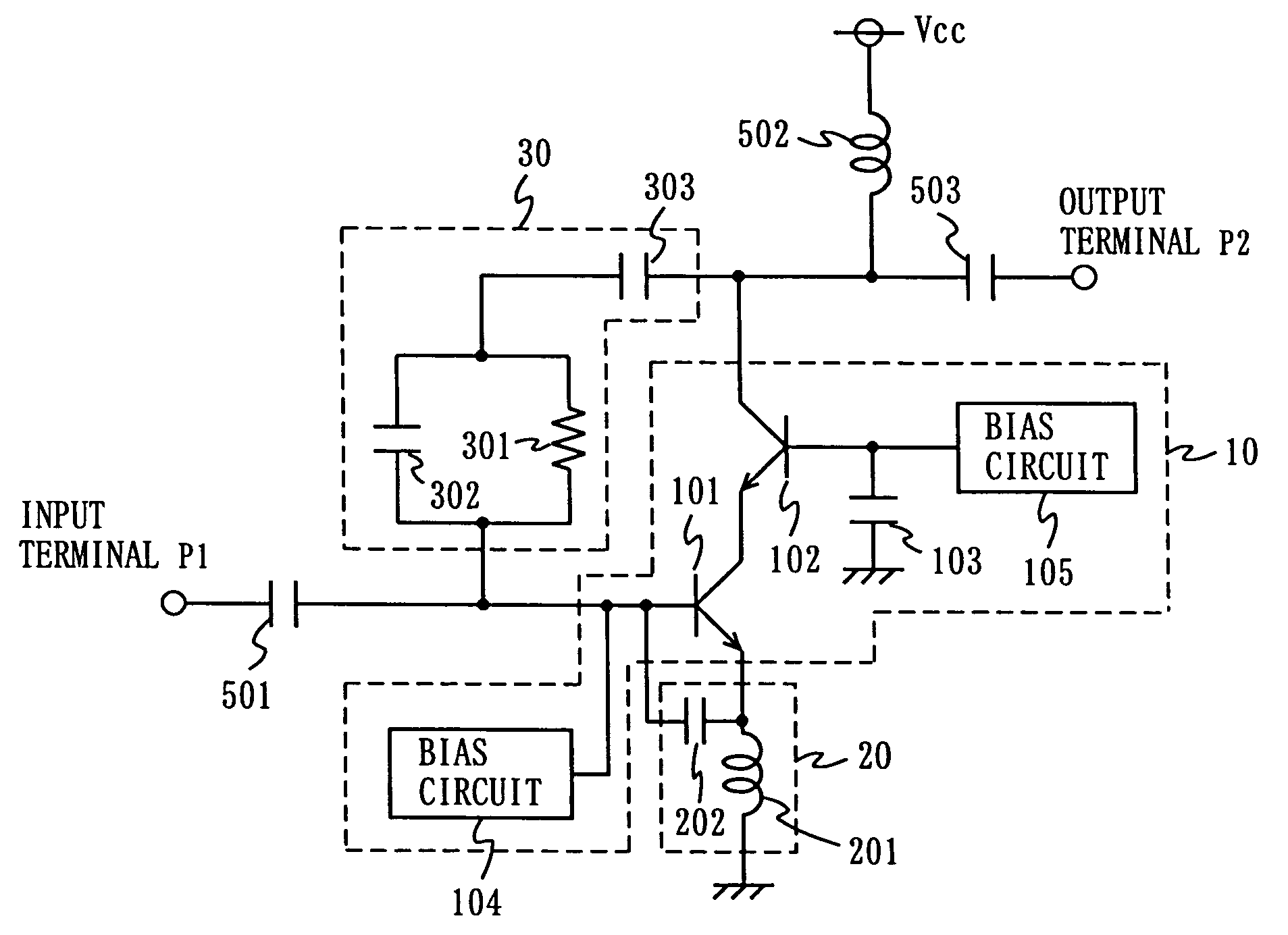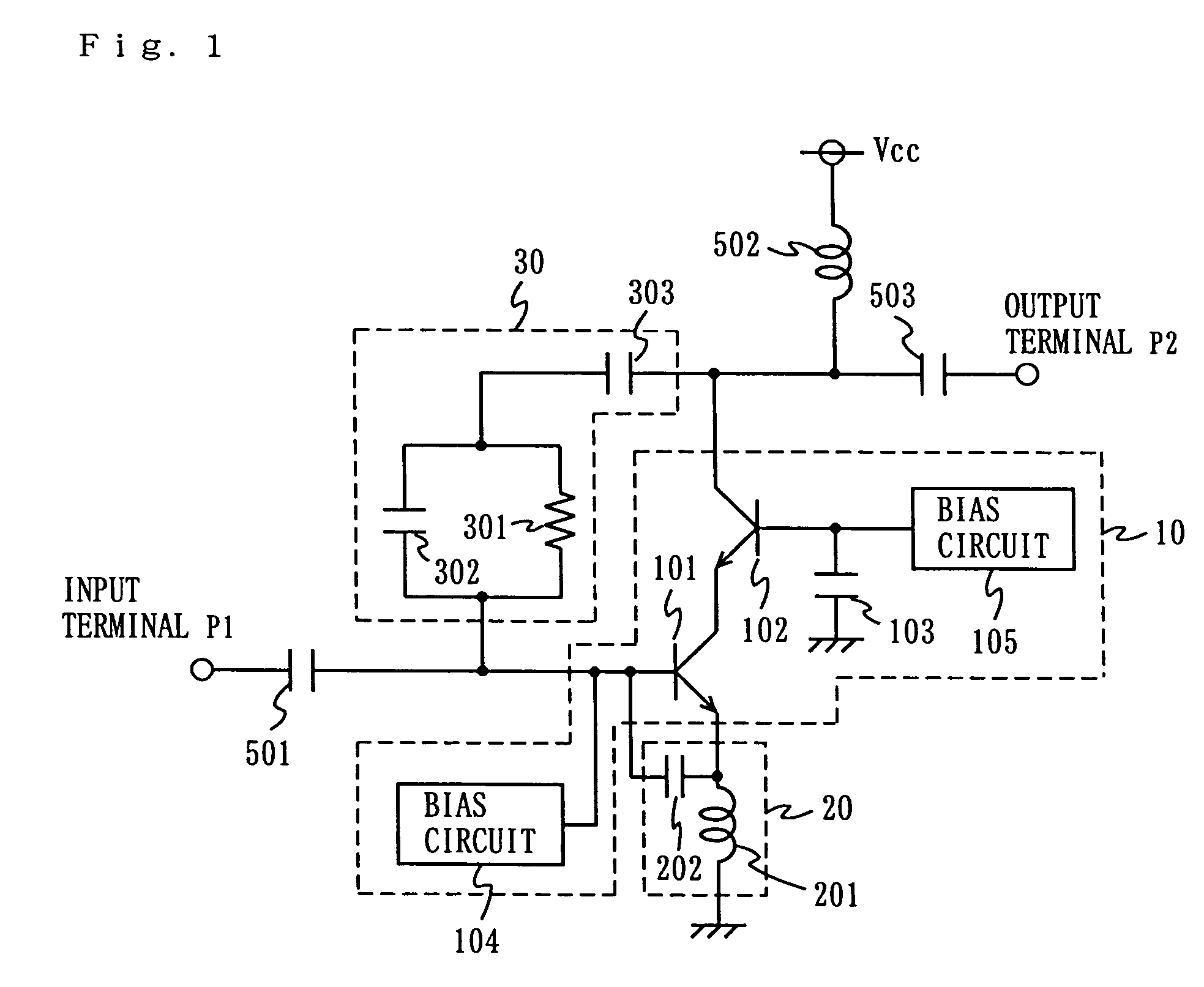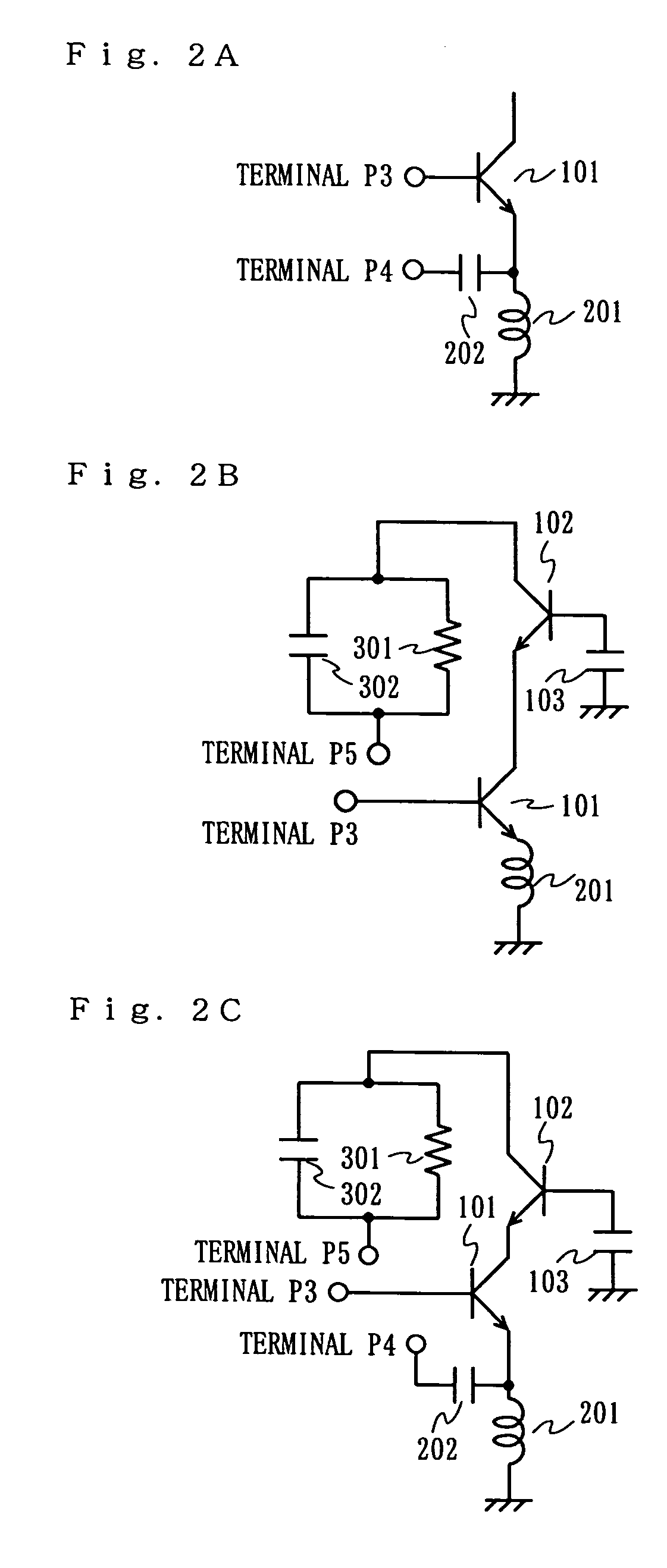Amplifier and frequency converter
- Summary
- Abstract
- Description
- Claims
- Application Information
AI Technical Summary
Benefits of technology
Problems solved by technology
Method used
Image
Examples
first embodiment
[0049] (First Embodiment)
[0050]FIG. 1 is a circuit diagram of an amplifier according to a first embodiment of the present invention. The amplifier as shown in FIG. 1 includes an amplifier circuit 10, a first feedback circuit 20, a second feedback circuit 30, a DC cut capacitors 501 and 503, and a choke inductor 502. This amplifier has a feature where the operations of the first feedback circuit 20 and the second feedback circuit 30 cause a phase of a signal in which fundamental waves included in two feedback signals are combined and a phase of a signal in which second harmonics included in two feedback signals are combined to be shifted by approximately 180 degrees from a phase of a fundamental wave of an input signal. Also, the amplifier is used mainly in a high frequency band.
[0051] The amplifier circuit 10 includes bipolar transistors 101 and 102, a bypass capacitor 103, and bias circuits 104 and 105. The amplifier circuit 10 amplifies a signal inputted from an input terminal P1...
second embodiment
[0061] (Second Embodiment)
[0062]FIG. 3 is a circuit diagram of an amplifier according to a second embodiment of the present invention. The amplifier as illustrated in FIG. 3 differs from that according to the first embodiment in that it is structured by a differential pair. The operation and effect of the amplifier which will be described below are similar to those of the amplifier according to the first embodiment, and therefore descriptions thereof are omitted. Hereinafter, only the circuit configuration will be described.
[0063] The amplifier as illustrated in FIG. 3 includes an amplifier circuit 15, a first feedback circuit 25, a second feedback circuit 35, DC cut capacitors 501a, 501b, 503a, and 503b, and choke inductors 502a and 502b. The amplifier circuit 15, the first feedback circuit 25, and the second feedback circuit 35 are exemplary modifications of the amplifier circuit 10, the first feedback circuit 20, and the second feedback circuit 30 according to the first embodime...
third embodiment
[0067] (Third Embodiment)
[0068]FIG. 4 is a circuit diagram of an amplifier according to a third embodiment of the present invention. The amplifier as illustrated in FIG. 4 is similar to that according to the second embodiment, except that the first feedback circuit 25 is replaced by a first feedback circuit 26. Therefore, in FIG. 4, components similar to those according to the second embodiment are provided with the same reference numerals, and are not described herein.
[0069] The first feedback circuit 26 includes inductors 201a, 201b, and 203, and capacitors 202a and 202b. As with the second embodiment, the emitters of the bipolar transistors 101a and 101b are connected to the inductors 201a and 201b, respectively, at one end each. At the other end each, the inductors 201a and 201b are connected to each other, and their connecting point Q2 is grounded via the inductor 203. The capacitor 202a is inserted between the emitter and base of the bipolar transistor 101a, whereas the capac...
PUM
 Login to View More
Login to View More Abstract
Description
Claims
Application Information
 Login to View More
Login to View More - R&D
- Intellectual Property
- Life Sciences
- Materials
- Tech Scout
- Unparalleled Data Quality
- Higher Quality Content
- 60% Fewer Hallucinations
Browse by: Latest US Patents, China's latest patents, Technical Efficacy Thesaurus, Application Domain, Technology Topic, Popular Technical Reports.
© 2025 PatSnap. All rights reserved.Legal|Privacy policy|Modern Slavery Act Transparency Statement|Sitemap|About US| Contact US: help@patsnap.com



